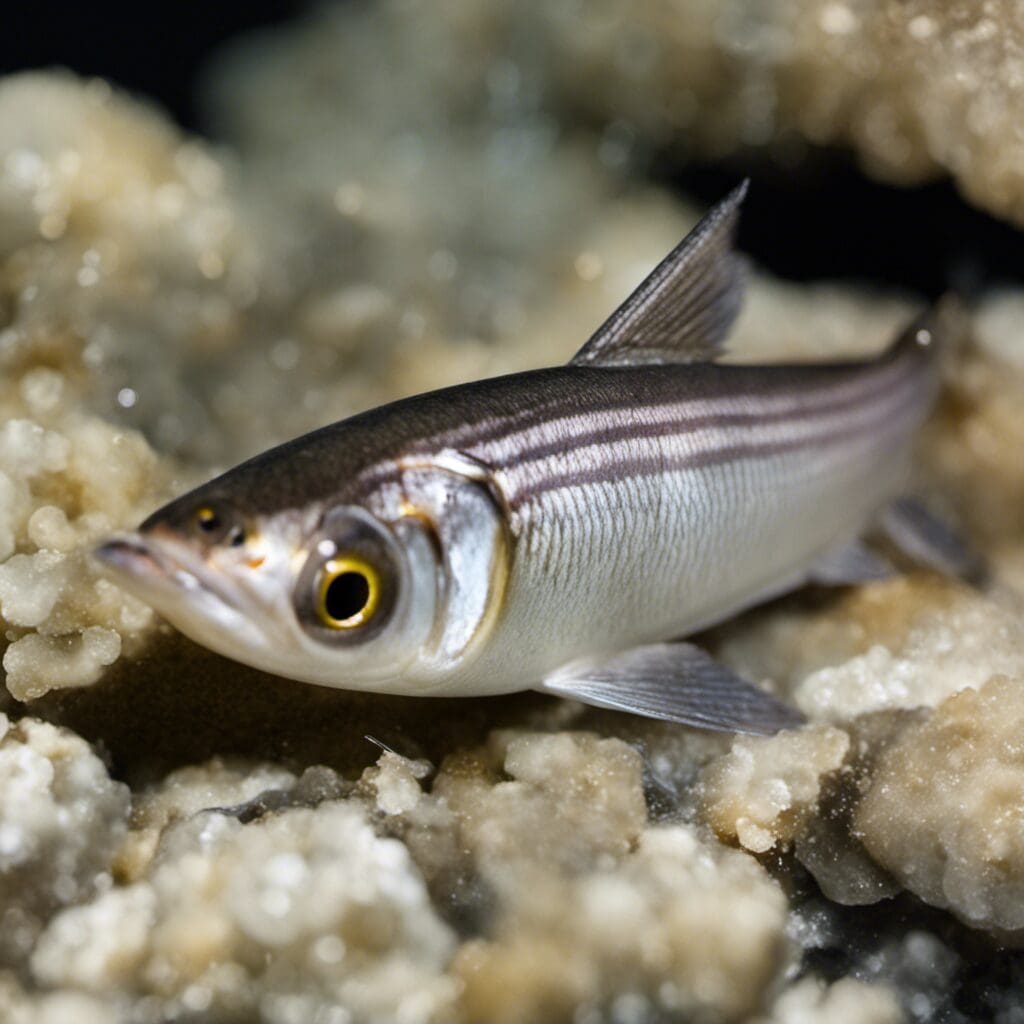Introduction
The Night Smelt (Spirinchus starksi) is a fish species belonging to the Osmeridae family, more commonly known as typical smelts. These small, silver fishes are well-adapted to living in the coastal waters of the Pacific Ocean.
Conservation Status
The current conservation status of the Night Smelt is not well-documented due to a lack of comprehensive evaluation. However, its proficient breeding habits and wide distribution make it a sustainable species to some extent. As such, it’s not perceived as a species under immediate threat, though further scientific evaluations and consistent monitoring are crucial for this fish.
Statistics: The Night Smelt At A Glance
| Average Length | Length Range | Average Weight | Weight Range | Average Lifespan |
|---|---|---|---|---|
| 20 cm | 15-25 cm | 100 g | 75-150 g | 3-4 years |
Distribution
The Night Smelt has a specific geographic distribution in the Pacific Ocean, stretching from Alaska in the north to California in the south.
Habitats
The species are predominantly found in coastal and inland waters, favoring the temperature range of 10 – 20 degrees Celsius. These fish are demersal, often seen in shallower depths but can comfortably thrive up to depths of 200m.
When and Where to See
Night Smelt are most visible during their spawning seasons, which typically start from March and continue up until July, peaking during late spring. As the name implies, they are often found near shores during twilight hours, making them quite observable to early morning and late-night fishermen.
Best Fishing Locations
- Morro Bay, California
- Tillamook Bay, Oregon
- Nehalem Bay, Oregon
- Grays Harbor, Washington
- Puget Sound, Washington
- Sitka, Alaska
- Kodiak Island, Alaska
- Kenai Peninsula, Alaska
- Monterey Bay, California
- Willapa Bay, Washington
How to Catch
Night Smelt can be caught using a variety of techniques, including seining and dip netting. Minnow traps can also be effective. Smelt runs take place at night, particularly on falling high tides. Keep an eye out for bird activity as a sign of smelt in the area.
Identification Guide
The Night Smelt has a slender, fusiform body and is silver in color. It also showcases a large mouth that stretches below its eye, distinguishing it from similar species.
Culinary
Night Smelt is a delicious variety of fish that can be pan-fried or smoked. Its taste profile is mildly sweet with a tender texture. A simple yet tasty recipe called “Pan-fried Night Smelt” which uses flour, salt, and lemon can be tried. It bears high protein content and Omega-3 fatty acids, providing good nutritional benefits.
Additional Information
Feeding primarily on microscopic plankton, Night Smelt swims along the water surface with the mouth open to filter food from the water. Their spawning is synchronized with tidal movements and lunar cycles. The main predators of Night Smelt include other larger fish species, sea birds, and seals.
References and Further Reading
All links will open in new tabs. The main sources for the above information include NOAA Fisheries, FAO species catalogue, and various local fishing guidebooks.

